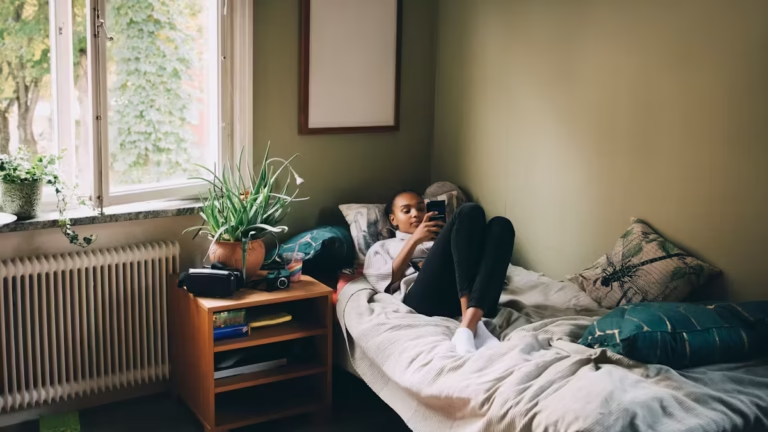Talking about mental health used to feel so taboo. Now it seems like everyone’s sharing their therapy wins on Instagram. Progress, right?
But when it comes to the serious stuff—like suicide prevention—we’re still struggling to have the real conversations that matter.
I learned this firsthand when my cousin spent three days in an ER hallway because there wasn’t a single mental health bed available in our entire county. Three days. In a hallway. With fluorescent lights and zero privacy while experiencing the worst mental health crisis of his life.
That experience changed how I look at our mental health system forever.
Mental health beds might sound like just another boring healthcare term. But trust me, they’re literally lifesaving spaces that we desperately need more of.
What is the role of mental health in suicide prevention?
Mental health plays this huge role in suicide prevention that we just don’t talk about enough.
When someone’s thinking about suicide, it’s almost never coming out of nowhere.
There’s usually ongoing depression, anxiety, trauma, or other mental health stuff happening behind the scenes.
Getting proper mental health care can be the difference between someone seeing a way forward or feeling completely trapped.
I hate when people say suicide is “selfish” or “a permanent solution to a temporary problem.” Those phrases completely miss the point.
When someone’s in that dark place, their brain is literally telling them that everyone would be better off without them.
Good mental health care helps people see through that fog.
It gives them tools to recognize those thoughts aren’t reality.
It connects them with professionals who can help during the worst moments.
And sometimes, that means having a safe place to stay during a crisis.
The Role of Mental Health Beds in Suicide Prevention Strategies
For those who aren’t familiar with them, a mental health bed is specifically designed for patients who are receiving inpatient care for psychological or psychiatric conditions.
Unlike standard hospital beds in Australia, mental health beds prioritise both comfort and safety. Crucially, they are also anti-ligature in nature, which means they reduce the risk of self-harm by eliminating points where cords or other items could be attached.
These beds boast a sturdy construction that can withstand high-use environments and unpredictable behaviour. Indeed, high-quality options like mental health beds from the Australian company Knightsbridge go a step further by incorporating calming aesthetics and smart design features that better support therapeutic recovery.
Understanding Mental Health Beds
Mental health beds aren’t just regular hospital beds with a different name tag.
They’re specialized spaces in psychiatric units or mental health facilities where people can receive 24/7 care during a crisis.
These beds come with trained staff who know how to help someone through their darkest moments.
They create an environment that’s actually designed to keep people safe when they might hurt themselves.
My friend Jen calls the week she spent in a mental health unit “the week that saved my life.”
She had access to therapy, medication adjustments, and constant support—all things that weren’t possible while she was at home alone.
The thing is, these beds aren’t meant to be forever homes.
They’re more like bridges—getting people safely from crisis to stability.
The Link Between Inpatient Care and Suicide Prevention
The numbers don’t lie here.
People are at their highest risk of suicide right after they leave the hospital or in the weeks following a crisis.
That’s why having good inpatient care matters so much.
A good mental health unit doesn’t just keep someone alive for a few days.
It helps create a plan for what happens next.
It connects people with outpatient care.
It makes sure they have their medications.
It helps identify triggers and warning signs.
I remember talking to a nurse who worked in a psychiatric unit for twenty years.
She told me, “The goal isn’t just to get them through today. It’s to give them skills and support for all their tomorrows.”
That always stuck with me.
The Current Shortage of Mental Health Beds
Here’s where things get frustrating.
We have nowhere near enough mental health beds in this country.
Most communities have seen their psychiatric beds disappear over the past few decades.
Hospitals closed units because they weren’t profitable enough.
State hospitals shut down without community services taking their place.
Now we have people waiting days or even weeks for a bed to open up.
Can you imagine having a heart attack and being told, “Sorry, all the cardiac care beds are full. Maybe try again next week?”
We’d never accept that for physical health emergencies.
Yet we accept it every day for mental health crises.
My own state lost over 30% of its inpatient psychiatric beds in the last ten years alone.
The math just doesn’t work.
Mental Health Beds as a Component of Crisis Response Systems
Mental health beds work best when they’re part of a bigger system.
Crisis lines that connect to mobile response teams.
Short-term crisis stabilization units.
Step-down programs after hospital stays.
Intensive outpatient programs.
All these pieces should work together like a well-oiled machine.
But right now, it’s more like trying to drive a car with missing wheels.
I visited a really cool crisis response center in Tucson a few years back.
They had the whole package—a 24/7 walk-in center, a crisis line, mobile teams, and both adult and youth inpatient units all under one roof.
The director told me they could help about 95% of people without hospitalization because they had so many options.
That’s what every community needs.
Barriers to Accessing Mental Health Beds
Even when beds do exist, getting access to them can feel like solving a Rubik’s cube blindfolded.
Insurance companies often deny coverage or only approve a few days.
Some facilities don’t take certain insurances at all.
Rural areas might not have any beds within hours of driving.
And don’t get me started on the paperwork and assessments required during a crisis.
My neighbor’s teenager spent 16 hours in an ER before being transferred to a psychiatric hospital two counties away.
The family had to scramble to figure out transportation for visits since they share one car.
Plus, there’s still so much shame around needing this kind of help.
People worry about their jobs, their reputations, their privacy.
All these barriers keep people from getting help when they need it most.
Innovations and Solutions in Mental Health Bed Utilization
Not all the news is bad, though.
Some places are getting creative about solving these problems.
Emory University created a virtual psychiatric ward where people get daily home visits from nurses and therapists.
Arizona has crisis apartments where people can stay for up to a week with peer support.
Some hospitals are redesigning their psychiatric units to feel less institutional and more healing.
Norway completely transformed their mental health system to focus on recovery rather than just stabilization.
I love hearing about these innovations because they prove things can get better.
We’re not stuck with the broken system we have now.
Change is happening, even if it’s happening too slowly.
Policy and Funding Considerations
Money talks, right?
And right now, it’s not saying much about mental health beds.
Funding these services takes real commitment from government, private insurance, and healthcare systems.
We need policies that treat mental health care with the same urgency as physical health care.
We need insurance that covers psychiatric stays adequately.
We need Medicare and Medicaid to stop discriminating against certain types of mental health facilities.
I once sat through a state budget hearing where they spent three hours debating highway funding and exactly fifteen minutes on the entire mental health budget.
That pretty much sums up our priorities.
But voter advocacy is starting to change this conversation.
More families are speaking out about their experiences.
More legislators are listening.
Change is possible.
The Role of Family and Support Systems
Families and friends are often the unseen heroes in all this.
They’re the ones staying up all night during crises.
They’re navigating complex systems to find help.
They’re providing care before, during, and after hospitalizations.
But they need support too.
They need education about mental illness.
They need respite care.
They need their own therapy sometimes.
My friend’s mom started a support group for parents of young adults with serious mental illness.
She says it saved her sanity during her son’s multiple hospitalizations.
Having others who truly get it made all the difference.
Conclusion
Mental health beds aren’t just about having a place to sleep during a crisis.
They represent our commitment to caring for people at their most vulnerable.
They’re a statement that we value human life even when that life feels unbearable to the person living it.
We need more beds, better access, and improved systems surrounding them.
But most importantly, we need to keep talking about this stuff openly.
No more whispers.
No more shame.
Just honest conversations about how we can better care for each other when the darkness feels too heavy to bear alone.
Because honestly, any one of us could find ourselves or someone we love needing one of these beds someday.
And when that day comes, I hope they’re available, accessible, and part of a system that truly helps people heal.



